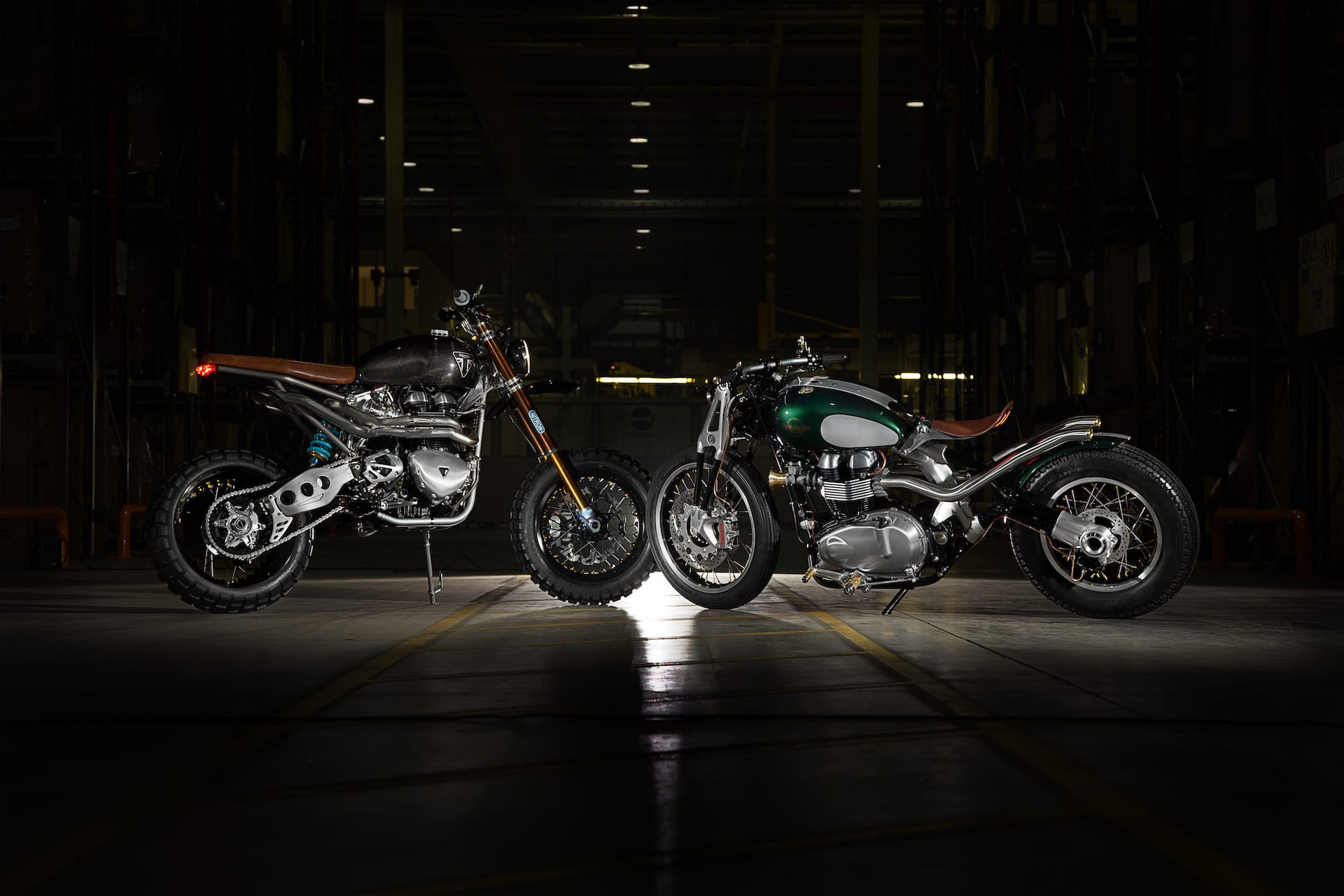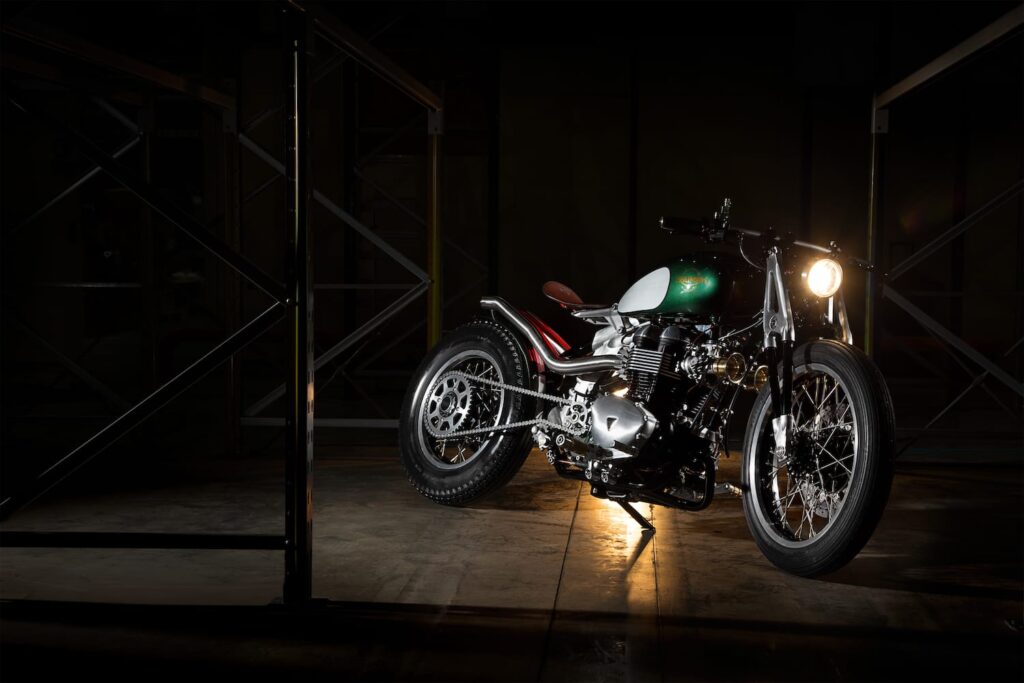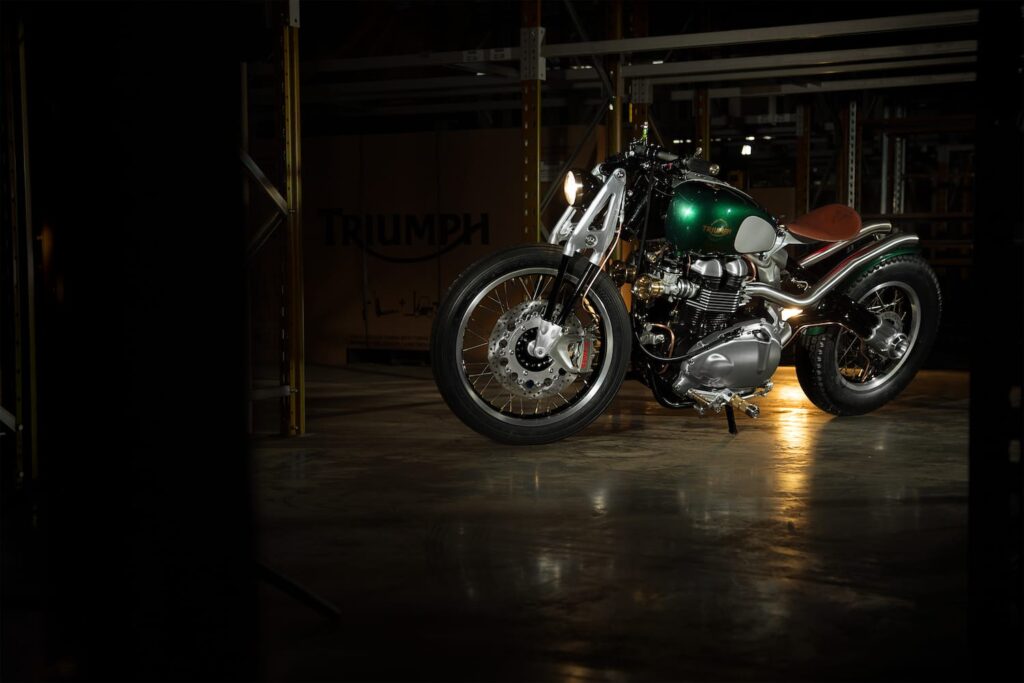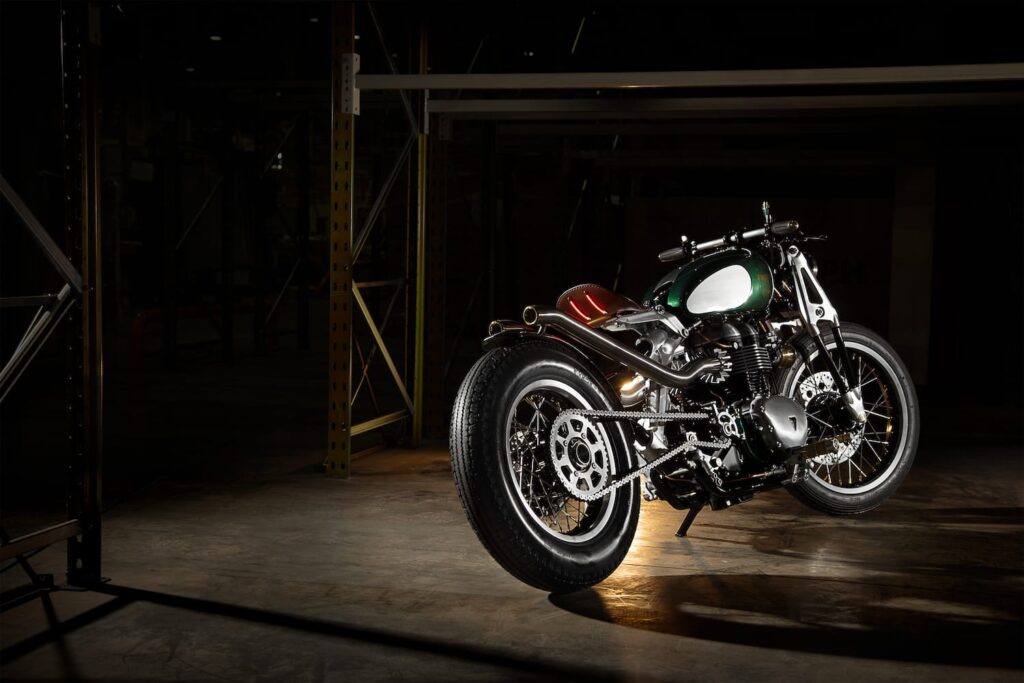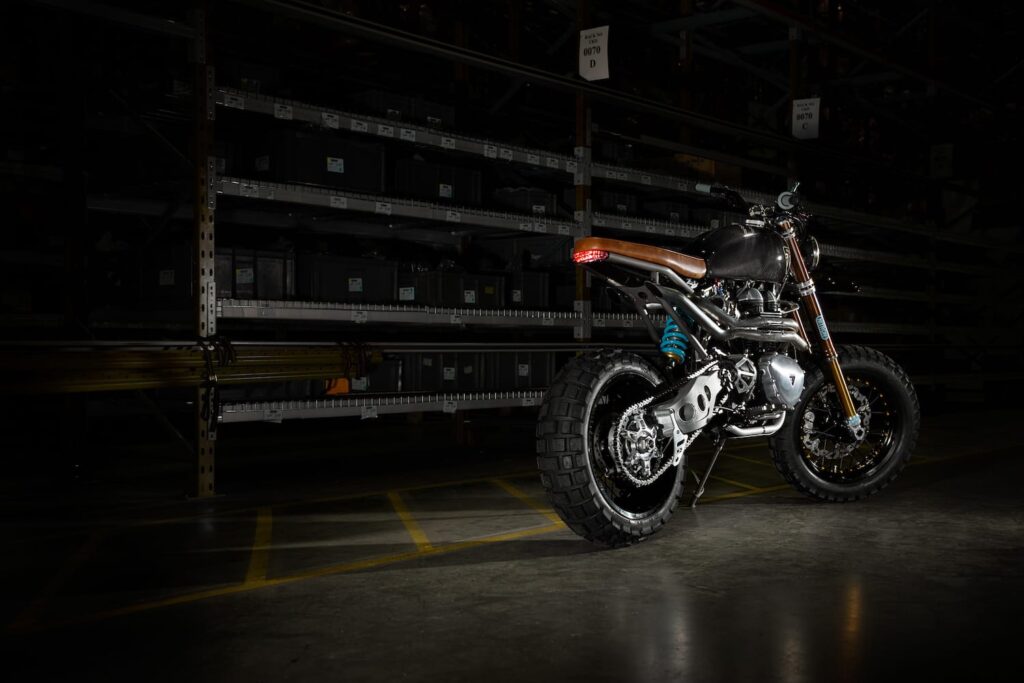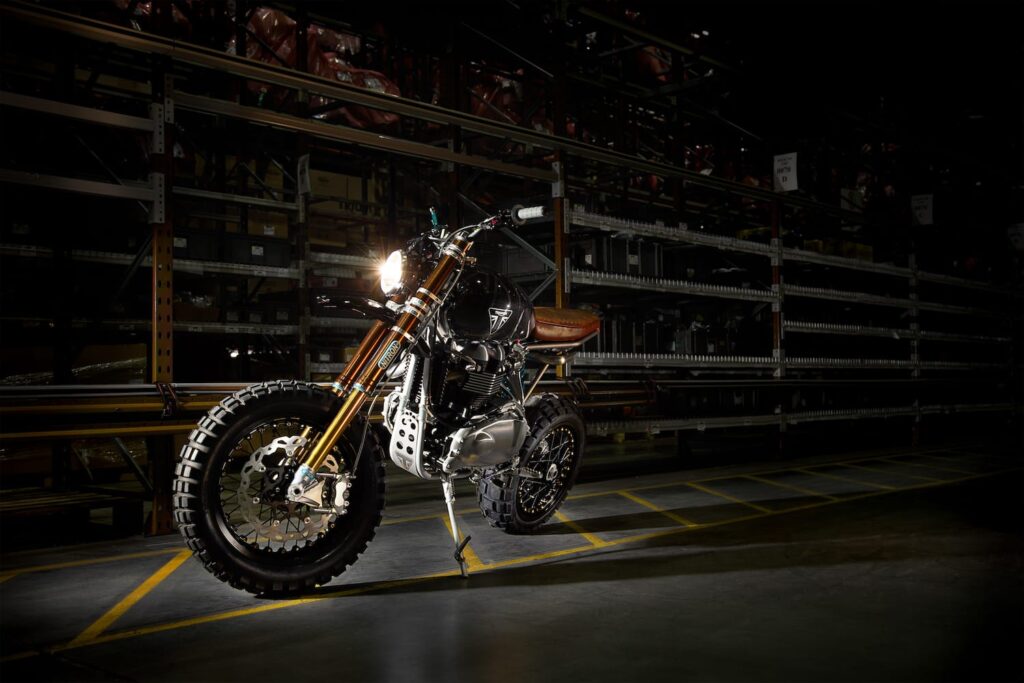Triumph Factory Custom
TFC (Triumph Factory Custom) is Triumph Motorcycles’ limited edition premium factory custom model.
With a strong focus on the custom scene, Triumph has taken a new approach to designing and manufacturing this special custom model, the TFC, with a focus on performance, equipment and technology to take Triumph to the top of its game as a manufacturer itself. The TFC is not a copycat, but an original and finely crafted product, with hand-crafted custom design, enhanced performance, class-leading technology, innovative engineering and high-spec equipment.
Prototype
In 2014, a group of designers and engineers with a love of customisation came together at the Hinckley headquarters in the UK to set the customisation project in motion to realise their vision of the ultimate custom build, unique to Triumph. The designers and engineers were split into two teams, each applying their craftsmanship, skills and passion to the elaborate design and engineering of the prototype.
The two prototypes were built in Bobber and Scrambler styles based on the Bonneville, which has been the choice of many top-class custom builders as a custom base, and were named TFC1 and TFC2 respectively.
TFC1: The Bobber
The team’s aim was to create a Bonneville that takes the spirit of the Bobber and pushes it to the limit, and that is in the tradition of Triumph, but with the full flavour of modern driving.
Twin Fox factory shocks, adjustable from the handlebars, form a modernly configured front end, while a completely redesigned fat fork overcomes the lack of handling and damping typical of this type of design.The four-pot calipers and wire wheels are a perfect blend of modern design and classic styling. The cantilevered rear end and tubular twin hardtail frame show engineering prowess, while the reverse-cylinder engine has a unique bell-shaped intake that accepts incoming air, from which a simple, elegant exhaust extends to form the rear line.
Inside the engine, the cam chain tensioner, oil port positions and oil passages have been changed, as has the cam timing of the camshafts rotating in opposite directions. The exhaust pipe has a two-walled construction to prevent the brushed surfaces from discolouring due to heat.
The joints between the frame elements are glued together with a special adhesive by one of the partners, ThreeBond, for a clean finish with no welding required and an unparalleled aesthetic appearance. The traditional single seat is designed with Fox shock absorbers and linkages in mind, and the rider can easily adjust the seat comfort with the flick of a lever. The team’s attention to detail is also evident in the understated lines of the Radianz LEDs integrated into the seat pan.
The team also wanted to build the ultimate modern Bonneville, so they incorporated all the modern electronic equipment into the Bobber. The tank was a two-part system, with one side of the tank used for electronics and the other for fuel. ‘Start’ and ‘Kill’ were added to this dummy side, along with reduced length equipment, a bespoke electronics board and a Motogadget speedometer, and a Motogadget keyless ignition was used to start the engine. The other side of the tank holds fuel, where a fuel injection pump and filter are also fitted, and a pop-up fuel cap is fitted.
TFC2: The Scrambler
The team’s interpretation of the Scrambler was to represent the ideal modern bike, with high performance, good handling and off-road capability, and the team members set ‘less weight, more power’ as the basic design theme for the successful project.
The approach involved bringing the geometry and suspension travel closer to that of modern competition motocrossers, and required a fast chassis to match the increased powerplant. The first step was to replace the original steel frame with a bespoke aluminium and titanium chassis with aggressive geometry and a more targeted stance. The aluminium frame also acts as a conduit for the throttle linkage and cables. The aluminium frame is fitted with delicate titanium sub-frames, which are hand-welded before being shot-blasted and mask-welded.
The bare chassis was beautifully finished, albeit a little at odds with the weight-saving aims, and the swingarm from the Speed Triple, although heavier than the original unit, was turned inside out and finished off with Triumph’s signature design. The swingarm assembly necessitated a change to a monoshock, resulting in the bike having a modern motocross feel, with a carefully tuned Nitron Racing Systems rear shock fitted alongside a purpose-built front fork.
The Scrambler, which had always been both elegant and aggressive, was given an even more complex bodywork to give it a unique finish. The team considered the possibility of using a carbon fuel tank very early on in the build and worked with Ace Fibreglass Ltd to produce a full carbon tank, along with other bodywork and a battery tray. The tank itself weighs less than a third of the original steel one, contributing significantly to the team’s aim of reducing weight while increasing power.
With the Scrambler weight reduction in sight, the team set about their next goal: more power. The cylinder heads were surfaced, the ports polished and a machined aluminium inlet trumpet fitted before the larger valves and Daytona throttle bodies were fitted. They also hand-made a high-lift cam with Daytona profiles, diverted from the twin they had modified. With these series of modifications to the engine, it was assumed that power would be increased by 25%.
17-inch Kineo wheels were fitted with 180-section rear tyres and 120-section front tyres. A 17-inch front wheel was also chosen, as it was intended that this ultimate Scrambler would be fitted with super high-grip slicks front and rear to make it the ultimate supermoto-style tracker.
TFC Production Models
The THRUXTON TFC was launched in 2019 as the first vehicle, followed by the ROCKET 3 TFC and BOBBER TFC, each limited to 750 units.

